Weird Cacti (and Their Sneaky Look-Alikes): A Real-World Guide
I’ve had dirt under my fingernails for what feels like a lifetime. Most of my days are spent in the warm, humid air of a greenhouse, and honestly, I’ve learned more from the plants themselves than from any book. You start to get a feel for things, like knowing a cactus is thirsty just by the heft of its pot. Oh, and I can spot the start of a mealybug infestation from across the room. (By the way, if you see little white cottony specks on your plants, that’s them. Just dip a cotton swab in some 70% rubbing alcohol and touch each bug. It’s a cheap, easy fix that works every time.)
In this article
- So, Is It Really a Cactus? Spotting the Impostors
- Why They Need What They Need: The Science of Survival
- My Go-To Soil Mix for Desert Cacti (It’s Cheaper, Too)
- Grafted Wonders: Two Plants in One
- Architectural Plants: Building a Collection
- Jungle Cacti: The Ones That Grow in Trees
- A Final Bit of Advice
- Inspirational Gallery
This kind of know-how doesn’t come from a weekend workshop. It’s built on years of success and, more importantly, a ton of failures. I’ve rotted prized plants and sunburned succulents that were supposed to love the shade. Every dead plant was a lesson, plain and simple.
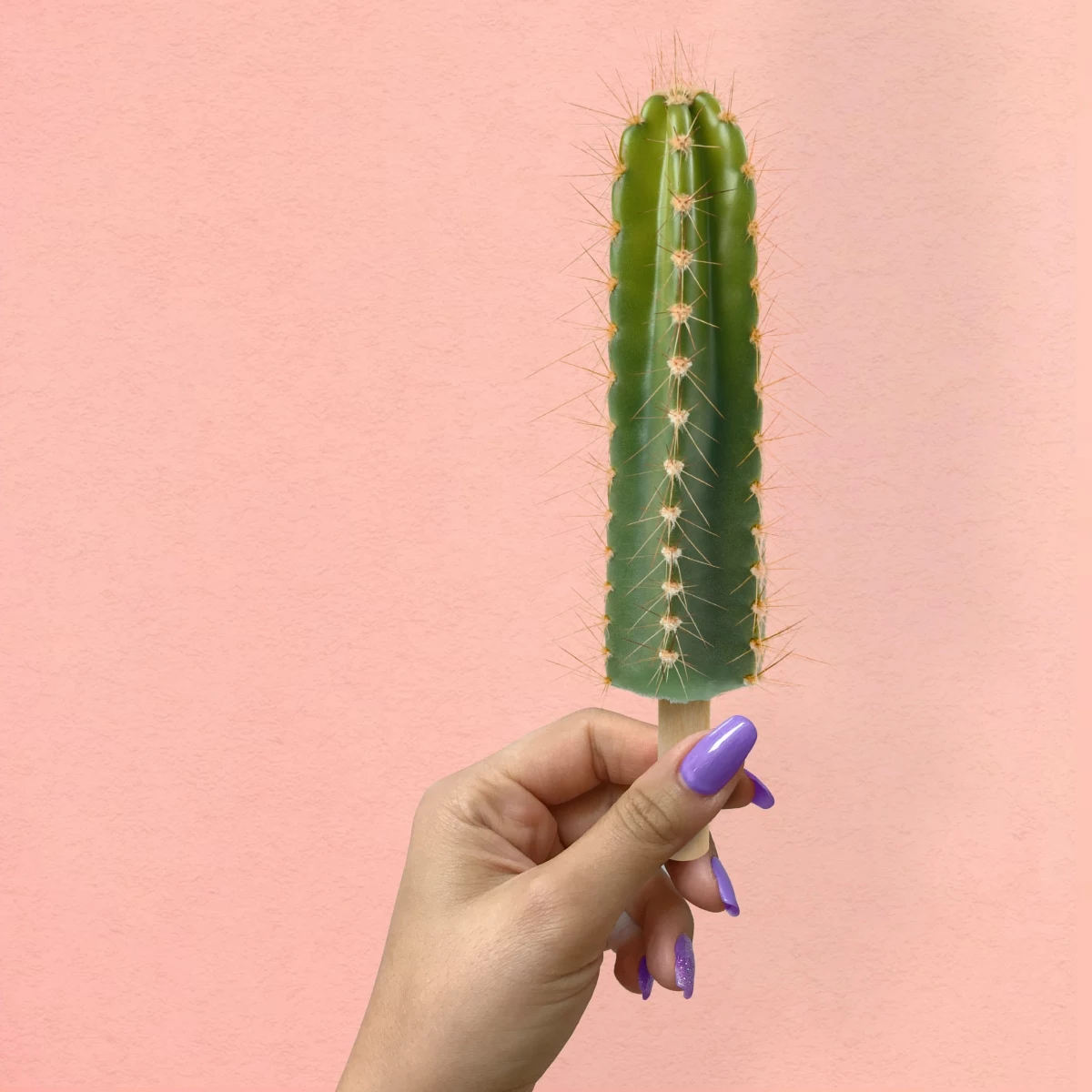
People often wander in looking for something “unique” or “rare.” But a plant’s wild shape is usually a clue about its very specific needs. A plant that looks like it belongs on a coral reef isn’t just a funky decoration; it’s a living thing with a history. Understanding that history is the real secret to helping it thrive.
So, this guide is all about those popular, weird-looking plants—some are true cacti, and some are very convincing fakes. We’re going to get our hands dirty and figure out what makes them tick so you can have a plant that’s thriving, not just surviving.
So, Is It Really a Cactus? Spotting the Impostors
First things first, let’s clear up the biggest mix-up in the plant world: not every spiky plant is a cactus. The one, single, defining feature of a true cactus is a little fuzzy bump called an areole. Think of it as a specialized plant part where everything happens—spines, flowers, and even new baby stems all pop out from this spot.
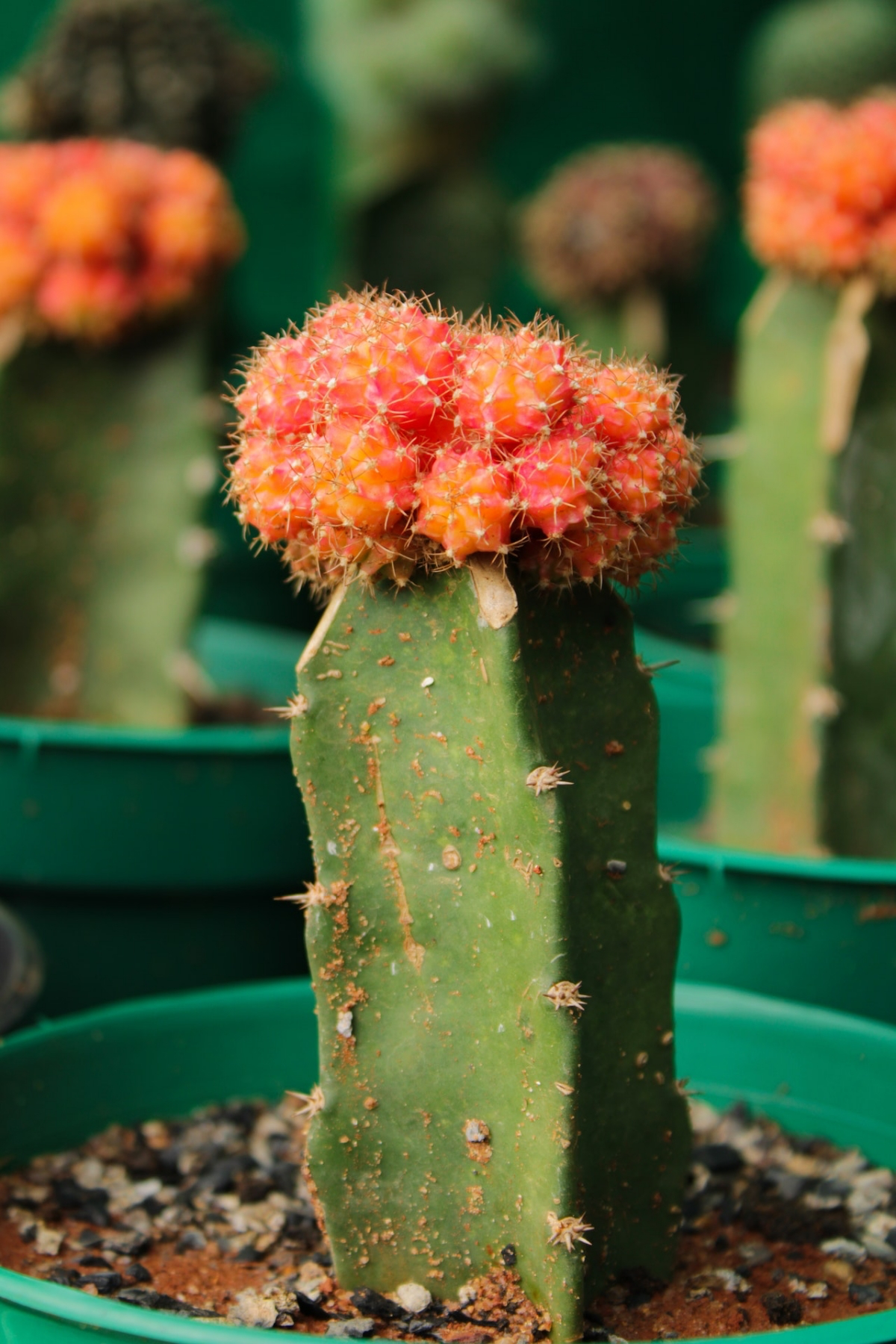
On the other hand, lots of plants have evolved to look like cacti to survive in harsh climates. These are the impostors, most often from the Euphorbia family. They look the part, but they’re missing the key feature. So how do you tell them apart? It’s pretty easy when you know what to look for:
- The Areole Test: A cactus has spines growing from those distinct, fuzzy areoles. A euphorbia, however, has thorns that poke right out of the main stem. No fuzz, no bump, just a thorn.
- The Sap Test (Heads Up!): If you accidentally break a piece off, a true cactus will have clear, watery sap. A euphorbia, though, will bleed a milky white latex sap. This stuff can be a serious skin irritant and is toxic if ingested, so knowing the difference is a big deal for safety.
Why They Need What They Need: The Science of Survival
Cacti are basically masters of water conservation. Most of them use a clever trick where they only open the pores on their skin at night to breathe in carbon dioxide. They keep everything sealed up tight during the hot day to avoid losing water. This slow, ultra-efficient system means they’re built for dryness, which is why their roots will rot in a heartbeat if they sit in wet soil. That’s why the soil you choose is probably the most important decision you’ll make.
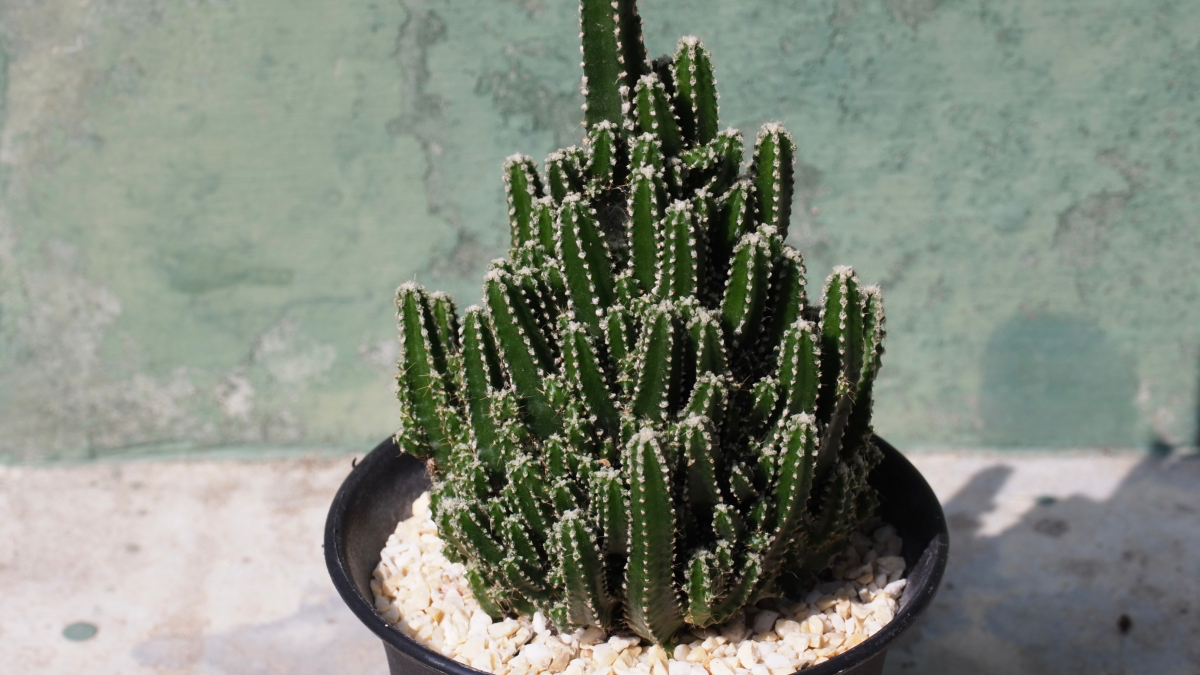
My Go-To Soil Mix for Desert Cacti (It’s Cheaper, Too)
Forget that bagged “Cactus and Succulent Mix” you find at big-box stores. To be frank, it’s usually just potting soil with a whisper of perlite, and it holds way too much water. Making your own is not only better for your plants, but it’s also way more cost-effective. You can whip up a huge batch for maybe $20-$30 that will last you for ages.
Here’s my simple, foolproof recipe. When I say “part,” I just mean a ratio—it can be a yogurt cup, a coffee can, or a shovel-full. Just keep the proportions the same.
Your Shopping List:
- 1 Part Pumice or Lava Rock (3/16” size is perfect): This is the hero ingredient. It creates air pockets so roots can breathe and water drains right through. You can usually find it in the bonsai section of a good garden center or online.
- 1 Part Coarse Sand or Granite Grit: This adds some weight and structure. Look for builder’s sand at a hardware store—definitely not fine play sand, which will just turn to concrete.
- 1 Part Organic Matter: I like to use coconut coir, which often comes in a compressed brick you rehydrate. It holds just enough moisture for the plant.
When you mix it all up, it should feel gritty, not spongy. If you squeeze a damp handful, it should crumble apart immediately. That’s the good stuff.

A Quick Word on Pots
Okay, so you have the perfect soil. What do you put it in? The number one rule is: it MUST have a drainage hole. No exceptions. As for material, terracotta is a fantastic choice for beginners. It’s porous, so it breathes and helps the soil dry out faster, giving you a buffer against overwatering. Plastic pots are cheaper but hold moisture longer, so you just have to be a little more careful not to water too often.
Grafted Wonders: Two Plants in One
Some of the most eye-catching plants you’ll see are actually two different plants fused together. This technique, called grafting, is used to grow cool varieties that can’t survive on their own roots. It’s pretty neat, but they come with a few quirks.
The Moon Cactus: Colorful but Temporary
That bright red, pink, or yellow ball on a green stick? That’s a Moon Cactus. It’s often a person’s first cactus because it’s cheap (usually $5-$10) and looks cool. But here’s the deal: the colorful top is a mutant that has no chlorophyll, so it can’t make its own food. The green base is a fast-growing dragon fruit cactus that acts as a life-support system. The top is basically a parasite.
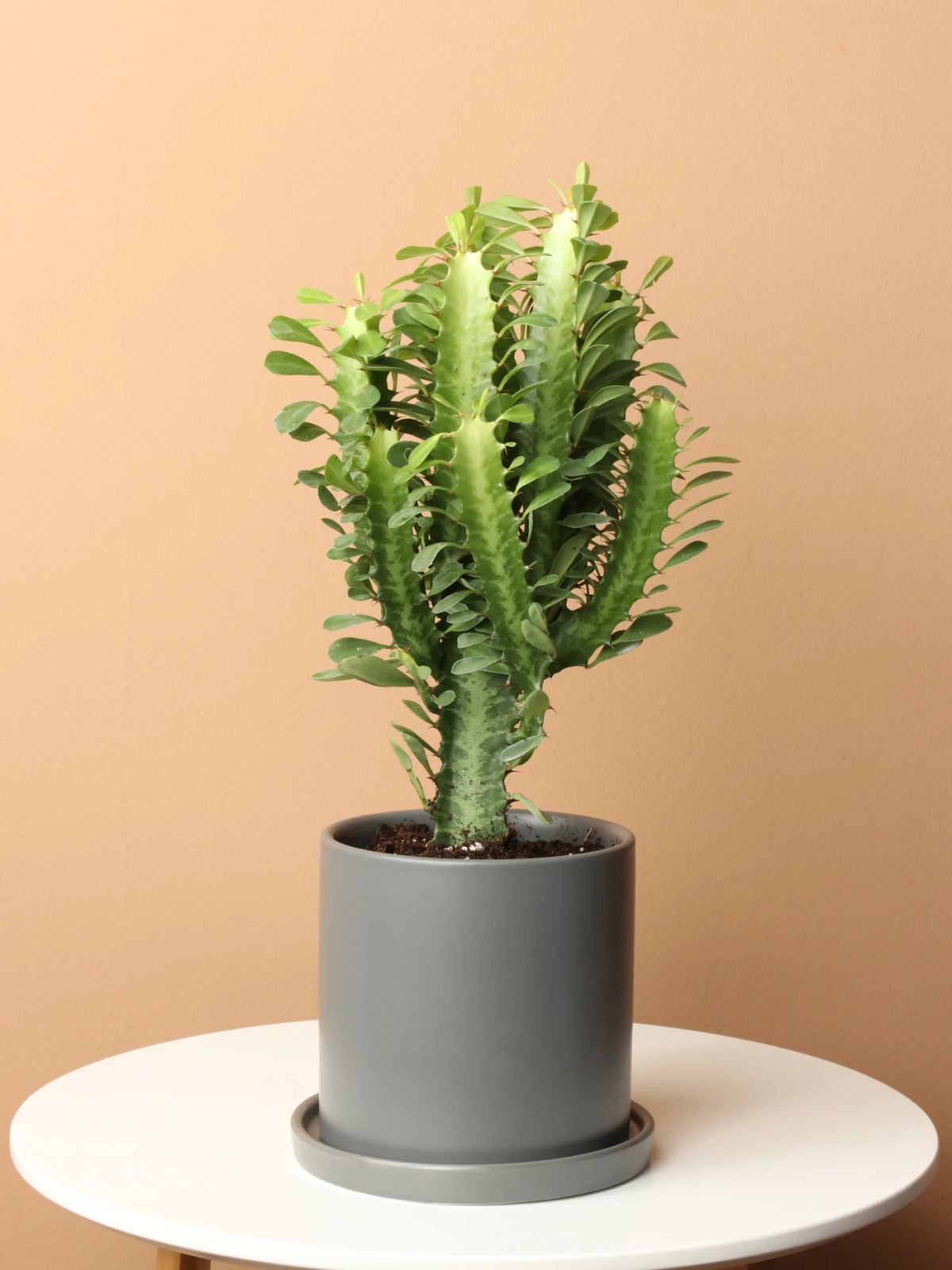
I’m always upfront with people about these. Moon Cacti have a notoriously short lifespan, maybe a year or two. The two plants grow at different rates, and eventually, the graft just fails. When it dies, don’t feel bad—it’s just the nature of this particular creation. For care, it needs bright, indirect light, as the colorful top will scorch easily in direct sun.
The Coral Cactus: The Sneaky Impostor
This is one of the most common fakes out there. The Coral Cactus, with its wavy, fan-shaped crest, looks like something from the ocean. It’s almost always in the cactus section, but… it’s not a cactus. It’s a grafted euphorbia.
CRITICAL SAFETY WARNING: Because it’s a euphorbia, it has that toxic, milky sap. Be careful! I always wash my hands immediately after handling one, and I’d recommend wearing gloves if you ever need to prune it. Keep it far away from curious kids and pets. Its biggest enemy is rot, which loves to form in the nooks and crannies of the crest. Always water the soil directly, not the plant itself. If you see a brown, mushy spot, you’ll have to perform surgery with a clean, sterile craft knife to cut the rot away. It’s a long shot, but sometimes you can save it.
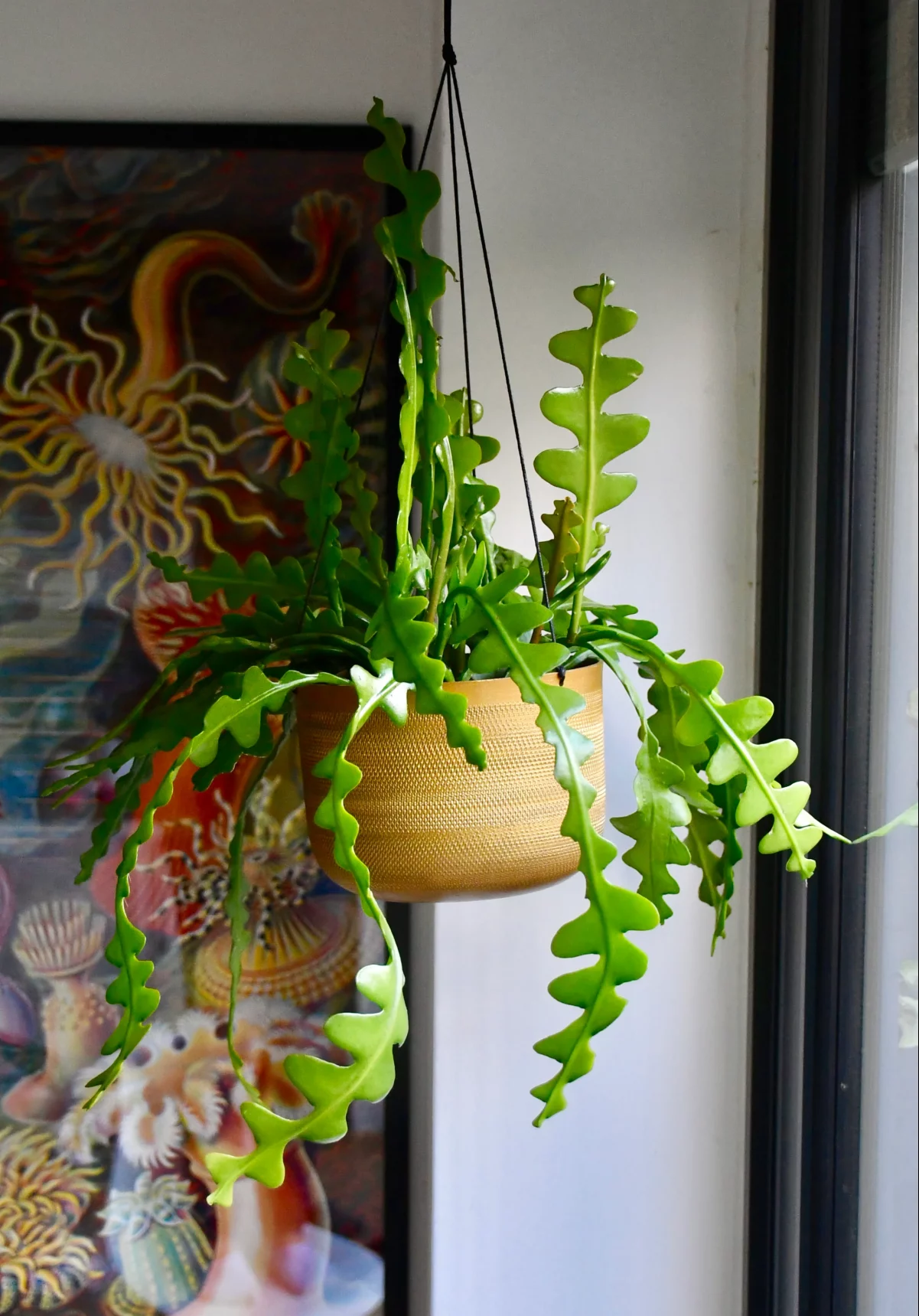
Architectural Plants: Building a Collection
Some plants are loved for their cool, structural shapes. Here again, we have a true cactus and a popular look-alike.
The Fairy Castle Cactus: A Lesson in Patience
This is a truly delightful plant that looks just like its name: a cluster of green castle turrets. It’s a true cactus, and it’s a slow, slow grower. People often ask me why theirs hasn’t grown in a year—that’s totally normal! It focuses on pushing up new stems from the base. A quick tip: resist the urge to feed it. A little diluted cactus fertilizer once in the spring is plenty for most desert cacti, but over-fertilizing this one will just give you weak, unnatural growth.
And the flower question? In all my years, I’ve seen exactly one of these bloom in a pot. They almost never do. Buy it for its charming shape, not for flowers you’ll likely never see.
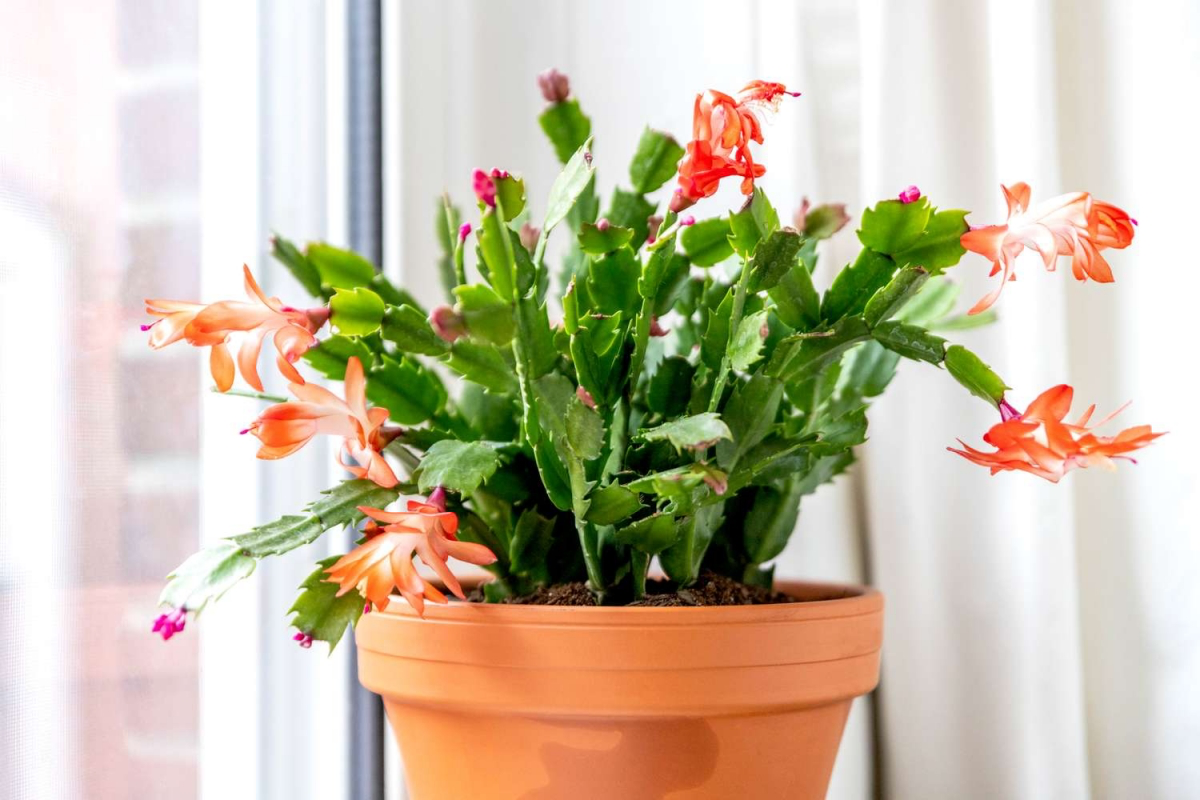
The African Milk Tree: The Tough, Top-Heavy Impostor
This is another euphorbia often mistaken for a cactus. It’s super popular because it’s tough and grows fast. But again, you have to respect that milky sap. I always wear gloves and glasses when taking cuttings. Because it gets tall and top-heavy, it’s a real tipping hazard. A fall can cause it to break open and release sap, so be mindful if you have pets or kids running around.
Jungle Cacti: The Ones That Grow in Trees
Believe it or not, a huge group of cacti are native to rainforests, where they grow in the crooks of trees. These are called epiphytes, and their care is completely different from their desert cousins.
The Ric Rac Cactus: A Zig-Zagging Wonder
With its flat, zig-zagging stems, this plant is perfect for a hanging basket. Coming from oak forests, it tells you it needs a different kind of care. It likes an airy, chunky soil (like an orchid mix) and appreciates more frequent watering than a desert cactus. The key is to keep the soil lightly moist. And it hates direct sun. A spot near an east-facing window is perfect. Get it right, and you’ll be rewarded with huge, fragrant, night-blooming flowers.
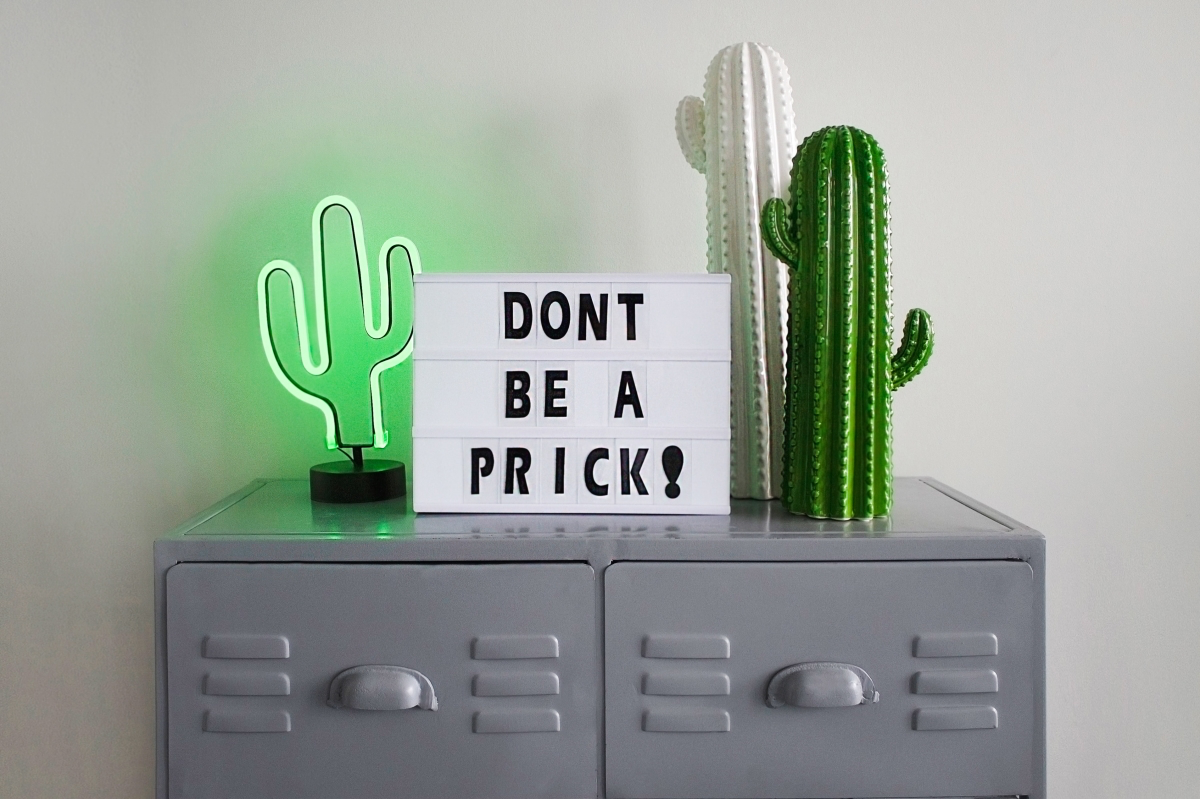
The Thanksgiving Cactus: Forcing Holiday Blooms
This is the classic holiday bloomer. The key to telling it apart from its Christmas and Easter cactus relatives is the stem segments: a Thanksgiving cactus has sharp, pointy, claw-like edges.
Here’s a lesser-known trick: you can make it bloom on schedule. About 6-8 weeks before the holiday, you need to give it longer, uninterrupted nights (12-14 hours of total darkness, like in a closet) and cooler temps (around 50-60°F). Once you see tiny buds forming, you can bring it back out and care for it normally. The biggest mistake people make is moving it or changing its watering schedule after the buds form. Any sudden change can cause it to drop all its buds in protest. Consistency is key!
A Final Bit of Advice
Bringing a plant home is an awesome way to connect with the natural world, but it’s also a responsibility. The most important lesson I’ve learned is to respect where a plant comes from. A cactus from a dry desert and one from a humid rainforest might both be called cacti, but they need completely different things to be happy. A little bit of knowledge goes a very long way. Now go get your hands dirty.
Inspirational Gallery
The milky-white sap of many Euphorbias is a latex that can be a skin and eye irritant.
This is a major clue that you’re handling a cactus impostor! If you accidentally snap a piece off and it ‘bleeds’ white, it’s almost certainly a Euphorbia. Unlike true cacti, whose sap is typically clear, this latex is a defense mechanism. It’s wise to wear gloves when pruning or repotting them, and always avoid touching your face or eyes afterward.
The right pot does more than just hold dirt.
Choosing a container is an aesthetic and a practical decision. For these architectural plants, the pot is a pedestal. A tall, columnar cactus like a Pilosocereus pachycladus gains dramatic presence in a low, wide bowl. A globular, clumping species, however, needs a pot that gives its pups room to spread. Think about proportion: a tiny pot can make a large plant look unstable, while an oversized one can dwarf your specimen and hold too much moisture.
My ‘Brain Cactus’ is wrinkling. Is it thirsty?
Probably, but don’t rush for the watering can! A bit of wrinkling is a natural signal of thirst in many cacti. The golden rule is to check the soil first. If it’s bone-dry an inch or two down, give it a thorough soak until water runs out the bottom. If there’s any dampness at all, wait. Persistent wrinkling on moist soil can actually signal the opposite problem: root rot, meaning the damaged roots can’t absorb water.
- Create free plants to trade or give away.
- Save a beloved specimen that’s rotting from the base.
- Easily multiply your favorite structural shapes.
The secret is callousing. For many succulents and cacti, you can take a cutting, let the wound dry and harden in the air for several days, then plant it in a dry, gritty mix. Don’t water it! The cutting will use its stored energy to push out new roots in search of moisture over the next few weeks.
Terracotta Pot: Porous and breathable, it wicks moisture away from the soil, drastically reducing the risk of root rot. It’s the safest bet for beginners.
Glazed Ceramic Pot: Non-porous, it holds moisture for longer and comes in endless styles and colors. A great choice if you’re a confident, less-frequent waterer.
For rare or rot-prone plants, the breathability of terracotta is almost always the superior choice.
A word on light: Many of these unique cacti get their dense, compact shapes and intense colors from high light exposure. A south-facing window is prime real estate. If your home is darker, don’t despair. A full-spectrum LED grow light (brands like Sansi or GE make excellent, affordable options) can prevent the sad, stretched-out growth known as etiolation and keep your weird plant looking its best.
The soil your cactus comes in from the big-box store is often too rich and water-retentive. Whip up a batch of superior, gritty mix that mimics their native habitat:
- One part commercial cactus soil: This is your organic base.
- One part pumice: This lightweight volcanic rock is the champion of aeration and drainage. It won’t compact over time like its cousin, perlite.
- One part coarse builder’s sand or poultry grit: Ensures water flows through quickly.
Ever seen a cactus that looks like a mesmerizing green brain or an undersea coral? You’ve likely encountered a ‘crested’ or ‘fasciated’ plant.
That strange, alien-looking plant you just bought might be hiding a secret: a
The zig-zag form of a Fishbone Cactus (*Disocactus anguliger*) or the cascading strings of a Burro’s Tail (*Sedum morganianum*) are perfect for hanging baskets. Suspending them allows their unusual forms to drape naturally and creates vertical interest in a room. It also improves air circulation around the plant, which helps the soil dry out evenly and discourages pests. Position them in a bright corner or near a window for a living curtain of foliage.










